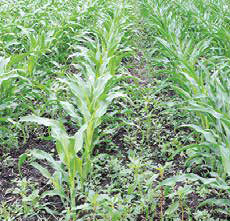Factors that Influence Herbicide Selection: Choosing the Right Tool for Weed Control
 Weeds are a significant challenge in agriculture, landscaping, and natural resource management. They compete with crops for nutrients, water, and sunlight, reducing yields and overall productivity. To combat these unwanted plants, herbicides are a common and effective tool. However, selecting the right herbicide for a particular situation is crucial for successful weed control. Various factors come into play when choosing the most suitable herbicide, and understanding these factors is essential for effective and responsible herbicide use.
Weeds are a significant challenge in agriculture, landscaping, and natural resource management. They compete with crops for nutrients, water, and sunlight, reducing yields and overall productivity. To combat these unwanted plants, herbicides are a common and effective tool. However, selecting the right herbicide for a particular situation is crucial for successful weed control. Various factors come into play when choosing the most suitable herbicide, and understanding these factors is essential for effective and responsible herbicide use.
1. Weed Species and Life Stage
Different herbicides are formulated to target specific weed species. Some herbicides are broad-spectrum, effective against a wide range of weeds, while others are selective, targeting only specific types of weeds. Understanding the weed species in your area and their life stage (e.g., germinating seeds, established plants, or mature plants) is fundamental to choosing the right herbicide. For example, pre-emergence herbicides are applied before weeds sprout, while post-emergence herbicides are used on established weeds.
2. Application Timing
Timing is crucial when it comes to herbicide selection. Herbicides are most effective when applied during the appropriate growth stage of the weed. For example, postemergence herbicides should be applied when weeds are actively growing and at their most vulnerable. Applying herbicides at the wrong time can reduce their efficacy and lead to herbicide resistance in weed populations.
3. Environmental Conditions
Environmental conditions can significantly impact herbicide effectiveness and safety. Factors such as temperature, humidity, wind speed, and rainfall can influence how herbicides work. Some herbicides work better in certain conditions, while others can be affected by adverse weather. It’s essential to consider the local climate and weather patterns when selecting an herbicide to ensure it performs optimally and doesn’t pose a risk to non-target plants or the environment.
4.Application Method
The method of application also plays a vital role in herbicide selection. Herbicides can be applied as sprays, granules, baits, or even injected into the soil. The choice of application method depends on the specific circumstances, such as the size of the area to be treated, the equipment available, and the targeted weed species. Proper equipment and application techniques are critical to ensure even and effective coverage.
5. Residual Activity and Persistence
Some herbicides have a short residual activity, while others can remain active in the soil for an extended period. Residual herbicides can provide long-term weed control, but they must be carefully selected to avoid damage to desirable plants or contamination of groundwater.Understanding the persistence of a herbicide is essential for planning crop rotations and managing potential environmental impacts.
6. Resistance Management
Herbicide resistance is a growing concern in agriculture and other sectors. Overreliance on a single herbicide or herbicide group can lead to resistant weed populations. Therefore, herbicide selection should be part of an integrated weed management strategy that includes rotating herbicides with different modes of action and incorporating non-chemical weed control methods.
7. Cost and Availability
Cost and availability are practical considerations when selecting an herbicide. Some herbicides may be more expensive than others, and their availability may vary by region. It’s important to weigh the cost of herbicide products against their efficacy and compatibility with your specific weed control needs.
8. Regulatory and Safety Considerations
Herbicides are subject to regulations that vary by country and region. It is essential to be aware of legal restrictions, label instructions, and safety guidelines when choosing and using herbicides. Understanding the potential health and environmental risks associated with a particular herbicide is vital to protect both human health and the ecosystem.
In conclusion, selecting the right herbicide is a critical decision in weed management. It involves a comprehensive assessment of factors such as weed species, growth stage, environmental conditions, application method, residual activity, resistance management, cost, and safety considerations. By carefully considering these factors and integrating herbicide use into a broader weed management strategy, you can effectively control weeds while minimizing the impact on the environment and ensuring the long-term success of your weed control efforts. Responsible herbicide selection and application are essential for sustainable agriculture, landscaping, and land stewardship.